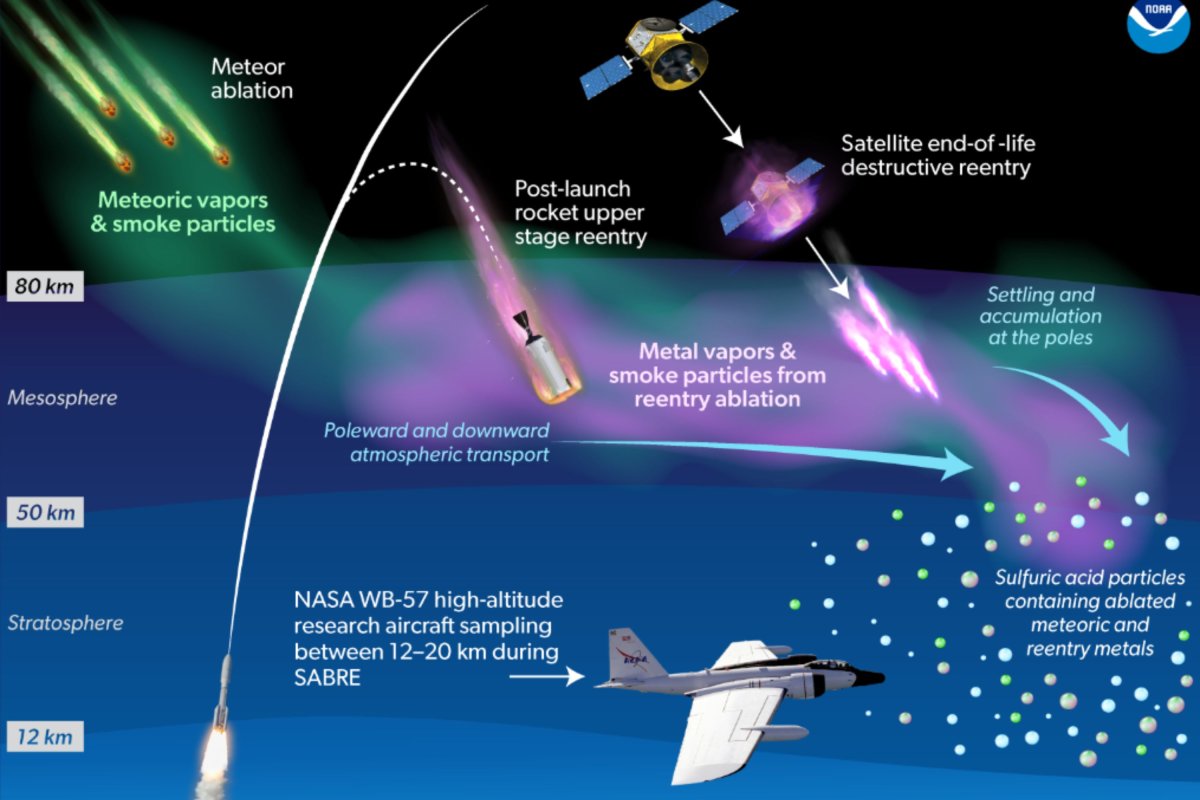As several decades’ worth of satellites and spacecraft have fallen back to Earth, their flaming-hot atmospheric reentries have started polluting the stratosphere with metal.
Data collected by a high-altitude research plane over the Arctic during a National Oceanic and Atmospheric Administration (NOAA) mission, revealed that 20 different metallic elements that do not naturally occur in Earth’s atmosphere were present. This including silver, iron, lead, magnesium, titanium, beryllium, chromium, nickel and zinc.
As revealed in a paper published in the journal PNAS, the scientists state that this metal pollution in the stratosphere is likely due to the huge amount of space junk we have in orbit falling back into the atmosphere one by one.
ISTOCK / GETTY IMAGES PLUS
“About half of the particles in the stratosphere naturally contain small amounts of iron, magnesium, and other metals from meteors. Right now there is much more iron from meteors than metals from reentering satellites and rocket boosters. However, the metals from reentry are different from those in meteors, so reentry is introducing new metals into the stratosphere,” Daniel Murphy, a research chemist at the NOAA Chemical Sciences Laboratory, told Newsweek.
The foreign metals were found embedded in around 10 percent of sulfuric acid particles that largely make up the stratosphere, which is the atmospheric layer between 7.5 and 31 miles above the ground. The scientists worry that with increased satellite launches in the coming years, the level of such metals in the atmosphere will increase as these satellites reenter, jumping to being embedded to as much as 50 percent of sulfuric acid particles.
“With expected increases in the number of satellites, the amount of aluminum and other metals from reentry could become comparable to the amount of iron and other metals from meteors,” Murphy said.
The potential for this increased metal level in the stratosphere to cause harm to humans is still unclear, the scientists say, but it is not likely to directly affect peoples’ health.
“We are just becoming aware that the metals from spacecraft reentry end up in particles in the stratosphere so we don’t yet know the possible impacts on the stratosphere. We haven’t observed any definite impacts but but it is uncomfortable to not know whether or not there are impacts from this rapidly growing industry,” Murphy said.

Chelsea Thompson/NOAA
“We do not think there is much chance of direct health effects on humans compared to the much larger emissions from industrial processes at ground level. Any harm, if it occurs, would be indirect through changes in the stratosphere.”
Over 15,000 satellites have been put into orbit around the Earth since the 1950s. There are 8,774 satellites currently in orbit around the Earth as of October 25, according to the tracking website Orbiting Now. There is also a huge amount of space junk and debris in orbit, with millions of minuscule chunks of metal zooming around the planet.
Two of the most surprising elements the scientists saw in the aforementioned particles were niobium and hafnium, both of which are rare elements that are not expected in the stratosphere, but are used in heat-resistant, high-performance alloys.
Do you have a tip on a science story that Newsweek should be covering? Do you have a question about satellites in orbit? Let us know via [email protected].
Uncommon Knowledge
Newsweek is committed to challenging conventional wisdom and finding connections in the search for common ground.
Newsweek is committed to challenging conventional wisdom and finding connections in the search for common ground.


